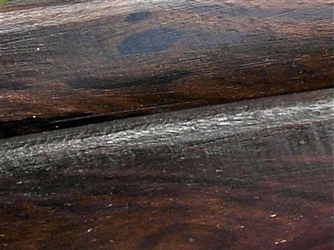 |
Ziricote
Ziricote is a rare exotic wood from Central and tropical South America that delivers a powerful medium-sharp tone.
Ziricote is a hard, heavy and highly durable wood with a lustrous surface that makes it a natural for handheld musical instruments. It is valued as a superior musical instrument lumber and used for premium acoustic guitars. What's more, the wood has about the closest grain resemblance to Brazilian Rosewood of any lumber although the color is darker and lacking the reds and oranges.
Figures below are approximate (but pretty darn close)
Tonality
Can't Decide Which Bones to Choose?Check out this handy guide: Bone FAQs
Scroll down for technical Ziricote facts...
|
|
Ziricote Facts
Scientific Name
Cordia dodecandra
Other Names
Amapa asta
Amapa beba
Amapa bola
Anacuite
Asta
Baria
Barl
Bocote
Bojon
Bonom
Canalete
Canaletta
Chackopte
Copite
Cupane
Freijo
Grisino
Gueramo
Habeen
K'an-k'opte
Keopte
Kopte
Laurel
Negra
Ocotillo meco
Palo de asta
Pardillo del monte
Peterebi
Siricote
Siricote blanco
Trompillo
Varia
Veria
Veria prieta
Zac-copte
Grain
Ziricote often shows spiderwebbing and other interesting grain patterns including a pleasing ray or fleck figure on quartersawn sections. The surface is plain brown with irregular dark brown and black streaking. Ziricote's grain is generally straight.
Texture
The texture ranges from extremely fine to coarse. The surface displays a somewhat oily or waxy appearance. This lustrous wood takes a smooth satin finish with just sanding and it polishes well.
Heartwood Color
Dark Brown with Black Streaking (French roast fudge)
The heartwood is dull tobacco to reddish brown with irregular dark brown or blackish streaks.
Sapwood Color
The sharply demarcated sapwood is creamy white to light golden tan which provides a handsome contrast to the black heartwood.
Aroma
Offers mild fragrant scent when freshly cut. No distinctive taste.
Environmental Profile
Available from environmentally responsible or sustainably managed sources within most of its natural habitat. Vulnerable in Mexico
Distribution
Northern Florida, the West Indies, Central America, and southward to Brazil and Argentina.
Tree Data
A small to large tree with a straight trunk 60 to 90 feet tall and up to 30 inches in diameter.
|
|
|